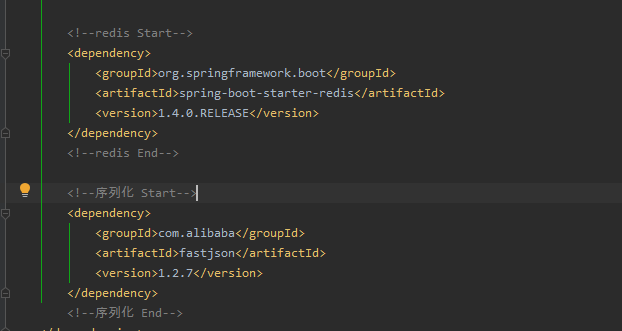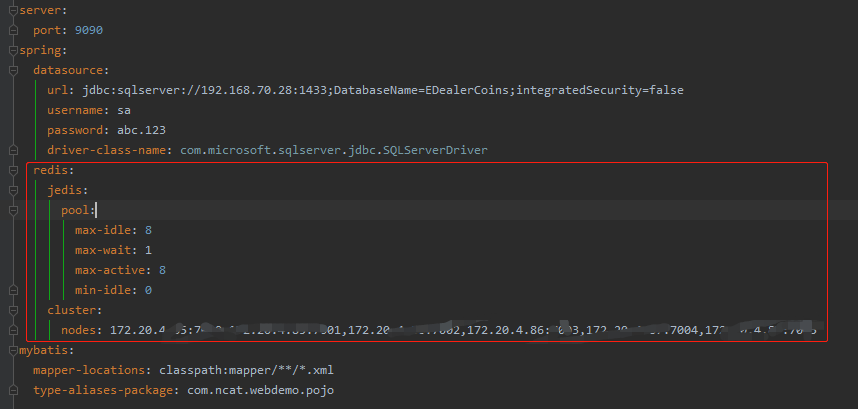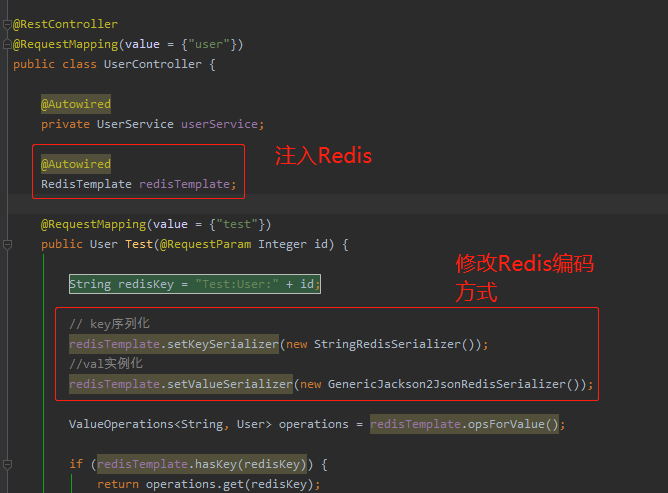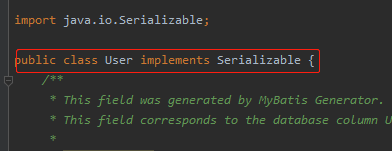Java 实战 spingboot-redis
继续之前的系列,这节我们来撸 springboot 框架中如何使用 redis
pom.xml 文件中 引入 redis 的依赖,引入 序列化的 依赖
引入序列化依赖,我们是想把上一个项目中从数据库获取到的实体,序列化到 Redis 中

application.yml 文件中,对 redis 做配置
注意:我这里是集群配置,当然你也可以配置单点的也没有问题

修改控制器代码

附代码:
package com.ncat.webdemo.controller;
import com.ncat.webdemo.service.UserService;
import org.springframework.beans.factory.annotation.Autowired;
import org.springframework.data.redis.core.RedisTemplate;
import org.springframework.data.redis.core.ValueOperations;
import org.springframework.data.redis.serializer.GenericJackson2JsonRedisSerializer;
import org.springframework.data.redis.serializer.StringRedisSerializer;
import org.springframework.web.bind.annotation.RequestMapping;
import org.springframework.web.bind.annotation.RequestParam;
import org.springframework.web.bind.annotation.RestController;
import com.ncat.webdemo.pojo.User;
import java.time.Duration;
@RestController
@RequestMapping(value = {"user"})
public class UserController {
@Autowired
private UserService userService;
@Autowired
RedisTemplate redisTemplate;
@RequestMapping(value = {"test"})
public User Test(@RequestParam Integer id) {
String redisKey = "Test:User:" + id;
// key序列化
redisTemplate.setKeySerializer(new StringRedisSerializer());
//val实例化
redisTemplate.setValueSerializer(new GenericJackson2JsonRedisSerializer());
ValueOperations<String, User> operations = redisTemplate.opsForValue();
if (redisTemplate.hasKey(redisKey)) {
return operations.get(redisKey);
} else {
User user = userService.selectByPrimaryKey(id);
operations.set(redisKey, user, Duration.ofSeconds(300));
return user;
}
}
}
浏览器运行

分析错误,应该是我们的实体 User 不能序列化导致
让 实体 User 实现 Serializable

再次运行

成功了,我们查看下 Redis

也可以查到了
系列文章
真正的大师永远怀着一颗学徒的心。

